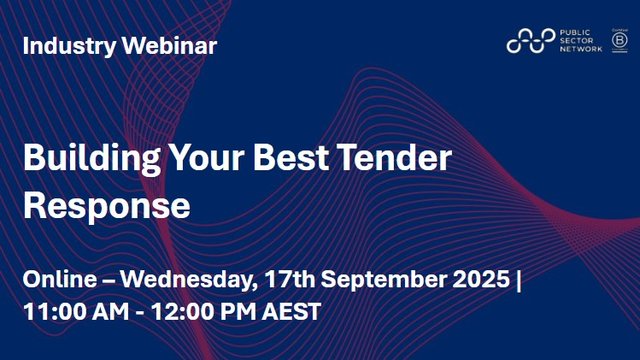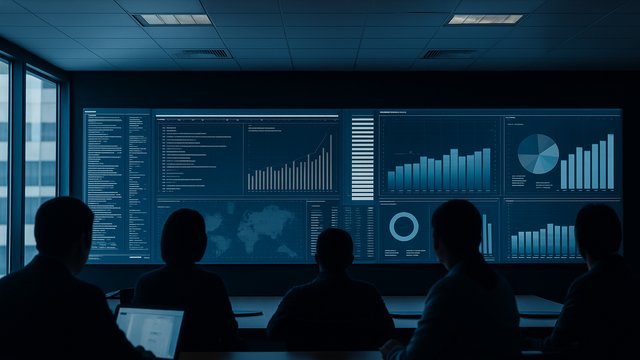Government Case Study:
Cultivating a culture that attracts and retains talent with agility and adaptability

In our recent New Ways of Working virtual event, we heard from Nicole Grice,Director, People Performance and Culture, NSW Department of Planning, Industry, and Environment where she explored:
--> Attracting talent that will help navigate a substantial reform and change agenda
--> Instilling a culture of flexibility and resilience in the face of ongoing disruptive change
A new way of working
It is fair to say that the last two years have been rather tumultuous for much of Eastern Australia. In NSW in particular there were bushfires in late 2019, the pandemic that started in 2020, the floods of early 2021, and then the Delta strain of the pandemic in the second half of 2021. Nicole Grice, the Director of People, Performance, and Culture at the NSW Department of Planning, Industry, and Environment (DPIE), says that “we have been operating in a heightened crisis mode for two years now.” DPIE has been at the centre of much of the state’s response to all the crises, and thus the more than 10,000 employees of the department have been heavily affected. “We continue to build resilience through the flexibility and the wellbeing of our people. Creating a culture of engagement and inclusion has been of utmost importance to us.” As a result of all of this, “the ways of working and how we engage in the ‘new normal’ with our people has completely changed since late 2019.”
All of the crises, particularly COVID-19, “have impacted the way people live, not just their working lives.” This is important because DPIE’s goal has always been to look after its people and starting in March 2020, this meant “supporting our people through these challenges in different ways.” The first way was through the creation of a “crisis management team.” This was made up of senior representatives of the functional teams and was enacted to bring everyone together to “provide support to our operational teams.” The intent was to make employees feel that they had “the support they needed.”
Concurrently, the department “extended full, flexible working options,” and almost overnight, “7,000 staff were working from home.” But many didn’t have the right equipment so that too needed to be arranged. Some frontline staff couldn’t go to work and others needed to be in the field, but the majority were engaged remotely. However, “we needed to expand our network capability to handle the increase in the remote work access demand, and we needed to enhance our virtual meeting platforms to keep our people engaged.”
“We need to increase our modes of communication because we needed to make sure that our people were not only safe and engaged but that they also understood how to do things differently and how to continue to build relationships with their team members in a virtual world.”
Concurrently, the department “extended full, flexible working options,” and almost overnight, “7,000 staff were working from home.” But many didn’t have the right equipment so that too needed to be arranged. Some frontline staff couldn’t go to work and others needed to be in the field, but the majority were engaged remotely. However, “we needed to expand our network capability to handle the increase in the remote work access demand, and we needed to enhance our virtual meeting platforms to keep our people engaged.”
Reform across the state
In response to the pandemic, the NSW government “initiated a suite of reform programs for economic and social recovery.” This included 7 reform initiatives and a total of 26 reform actions “with funding approval for $250 million, and sitting across 13 teams.” In particular, it focussed on the area of planning, and specifically on “the technology platforms, the processes we use, the approaches we take, the branding we have, and the way we can reform and accelerate planning in NSW, and the skills and resources of our current people.” In other words, it is about “how we can make a difference.” Across all of government, this program is about “improving timeframes, eliminating double handling and removing the proverbial red tape to deliver benefits for the people of NSW.” DPIE specifically saw this as an opportunity to “not just do things the way we’ve always done them but to change our behavioural mind-set in our current workforce.”
It’s a three year “tiered reform package” with short, medium and long-term goals, from one month to three years. One of the keys however was “not to interrupt our business-as-usual.” To achieve that, “we focused on our goals and what we are here to accomplish.” The sponsorship by a senior executive for each project was also important. Though the catalyst for all of this reform was the pandemic, “it was actually a much longer term approach for us.” The department conducted a gap analysis and numerous other analyses “on our people, our skills, our resources and our time, and we identified all of our gaps.”
Changing the culture and building resilience
Once all the preparatory work was completed, the department created “a specific Planning Delivery Unit for this reform work, led by a Coordinator General – a senior executive sponsor.” The unit then created targets. “Quick wins that were achievable with our existing resources; short-term projects (2-6 months) with contractors engaged to commence delivery; and medium-term projects (4 months and beyond) to on-board 200 new resources and create a blended workforce.” All of this was achieved with working groups, network connections across the NSW public service, and new engagement activities. The culture of the department started to shift, “and if I had to sum it up in three words, it would be agility, resilience and clarity because with clarity and resilience, people are agile.”
Building resilience in order for people to become agile was one of the drivers, and to that end, “wellbeing and mental health awareness has been critical.” But it’s not only about exercises and initiatives. It’s also about “understanding people’s self-awareness and making it known that it’s okay not to be okay.” Not everyone can be positive every day, so “just own it and your support will be there.” This applies to leaders as well. They suffer like everyone else and the organisation needs to see it. “We actually ran a lot of live workplace video sessions showing the leaders sitting in their homes with kids at the dining room table home-schooling just like everybody else. That leader vulnerability really built trust.”
Also in the midst of the COVID-19 lockdowns, the department “launched our updated vision and values, and our new performance and development cycle.” This showed that the work was carrying on and “helped people with understanding how they can clearly prioritise and plan.”
“During these challenging times, prioritising their key focus areas and learning not take on extra things has been really key to the success of keeping our people engaged and keeping their mental health and wellbeing strong. For us, it’s really been about resilience, clarity and flexibility to make sure that our people are supported and to keep them agile.”



































